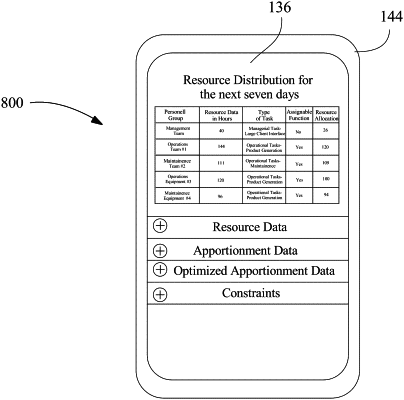| CPC G06F 9/5027 (2013.01) [G06Q 10/06311 (2013.01); G06Q 10/06312 (2013.01)] | 18 Claims |

|
1. An apparatus for determining resource distribution, wherein the apparatus comprises: at least a processor;
and a memory communicatively connected to the at least a processor, the memory containing instructions configuring the at least a processor to:
receive an entity profile from a user, wherein the entity profile comprises a plurality of function data;
identify a plurality of resource data as a function of the entity profile, wherein the plurality of resource data comprises outlier clusters which represent an area of competence;
determine apportionment data associated with the plurality of function data as a function of the plurality of resource data;
generate optimized apportionment data as a function of the apportionment data and the plurality of resource data, wherein generating the optimized apportionment data comprises:
identifying at least one constraint associated with the apportionment data and the plurality of resource data using a constraint machine learning model, wherein identifying the at least one constraint further comprises:
receive constraint training data, wherein the constraint training data is a data set that correlates apportionment data to historical constraints;
train, iteratively, the constraint machine learning model using the constraint training data, wherein training the constraint machine learning model includes retraining the constraint machine learning model with feedback from previous iterations of the constraint machine learning model; and
identify, as a function of the trained constraint machine learning model, the at least one constraint;
generating the optimized apportionment data as a function of the at least one constraint;
predict a breakaway point as a function of the optimized apportionment data, wherein predicting the breakaway point comprises:
receiving breakaway training data correlating optimized apportionment data to a plurality of breakaway points:
training a breakaway machine-learning model using the breakaway training data:
outputting, by the breakaway machine-learning model, the breakaway point, wherein the breakaway point determines a point in time a goal of an entity will be achieved;
determine a resource distribution as a function of the optimized apportionment data and the breakaway point, wherein determining the resource distribution comprises unitizing a distribution machine-learning model trained to correlate the optimized apportionment data and the breakaway a plurality of resource distributions; and present the resource distribution using a display device.
|